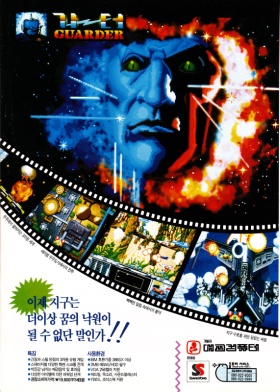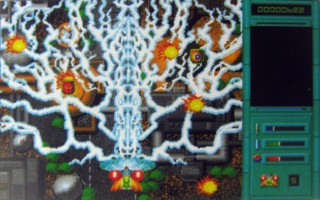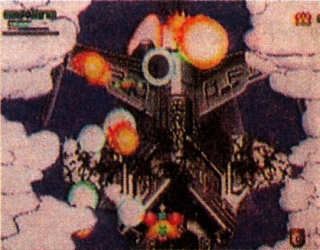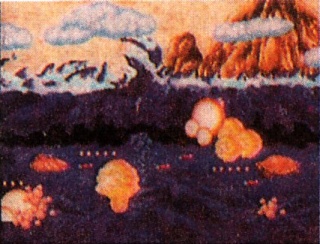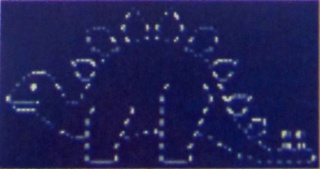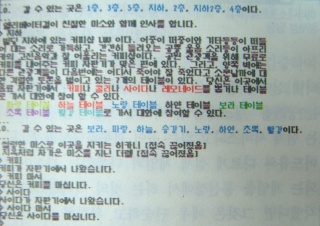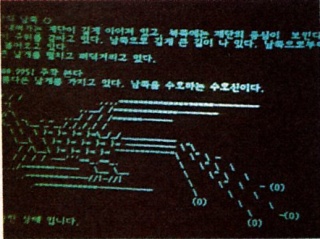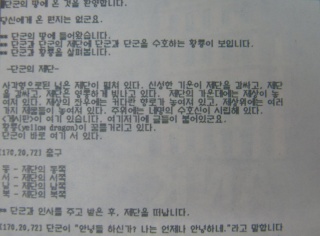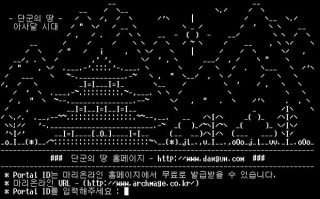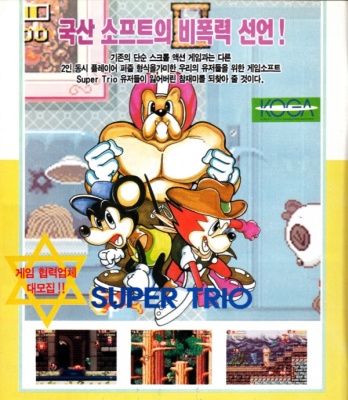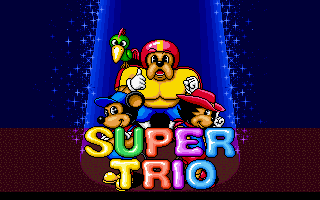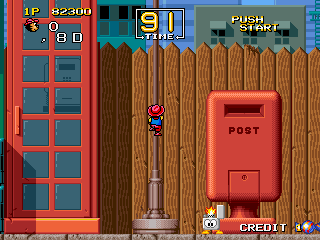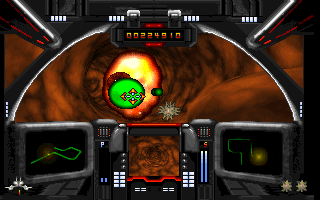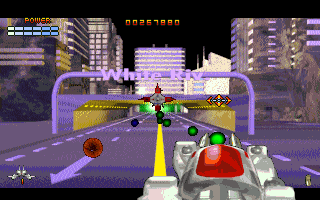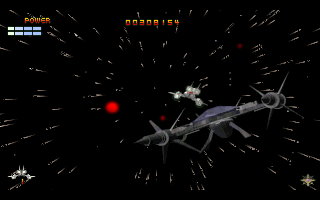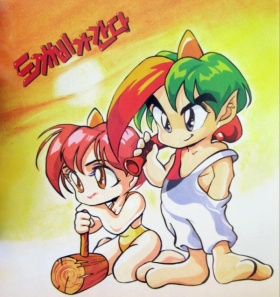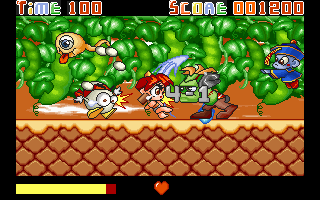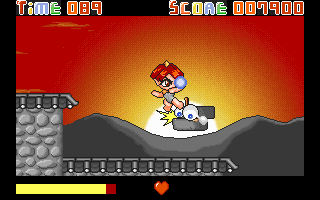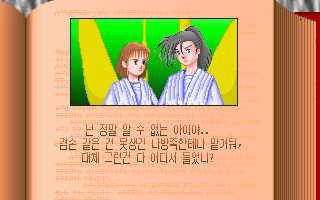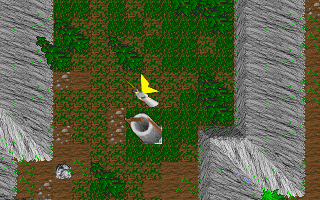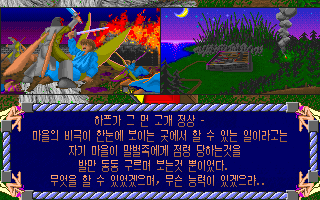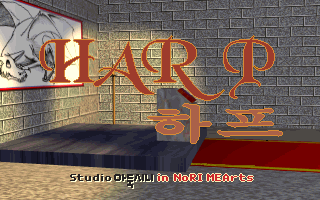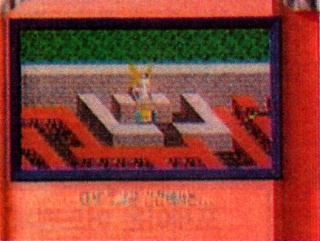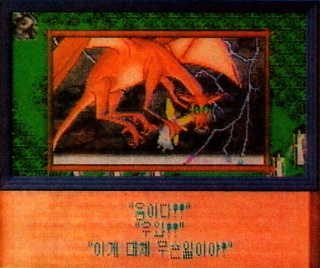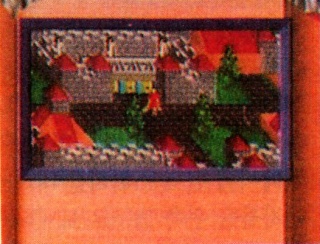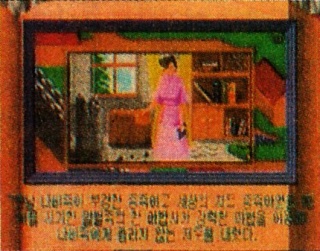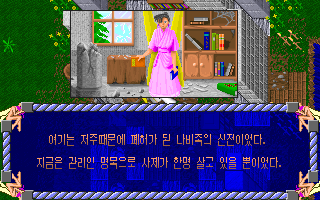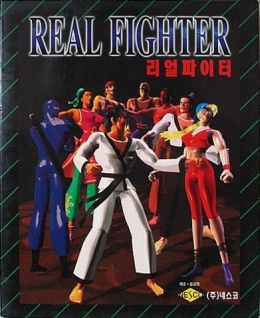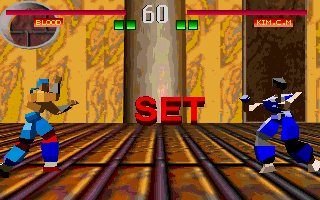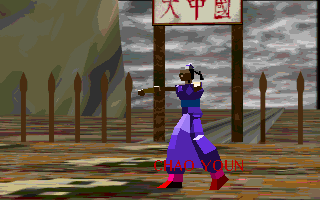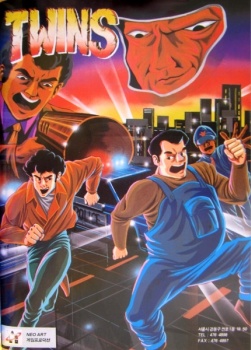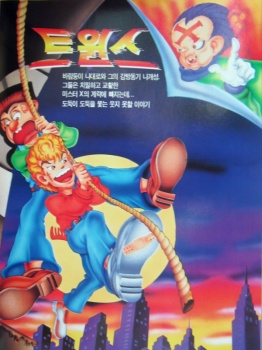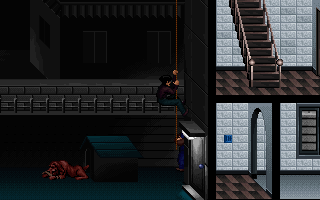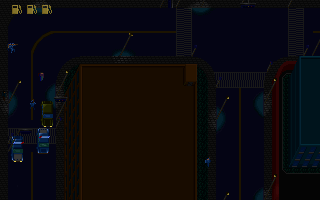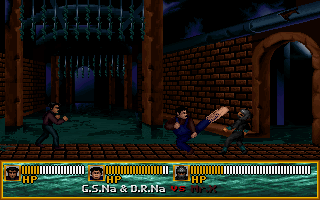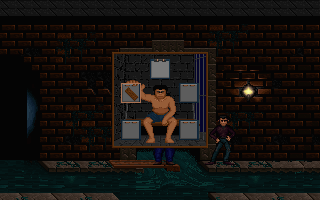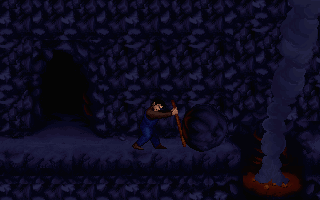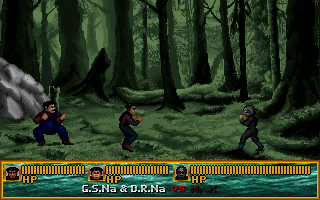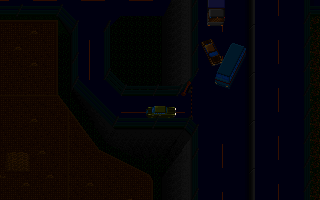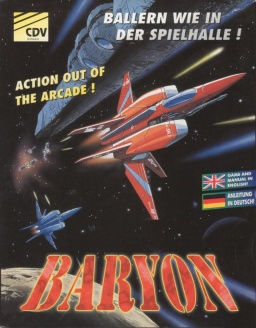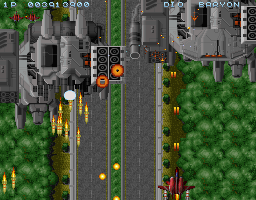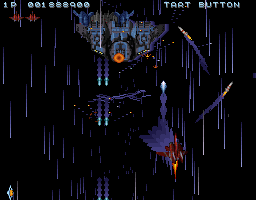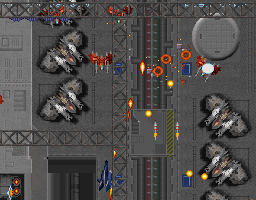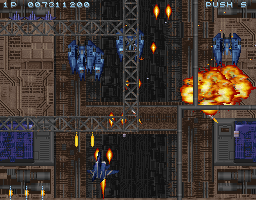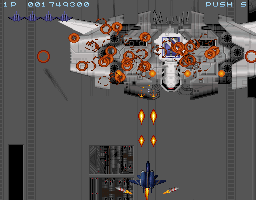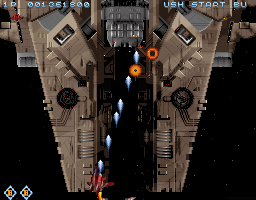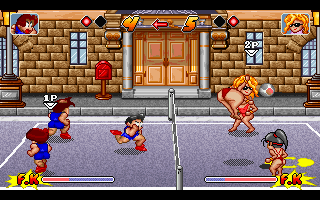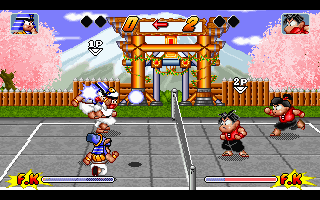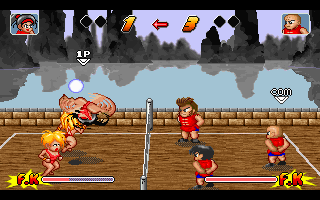A History of Korean Gaming
|
Other Games: |
||||
|
|
||||
|
|
|
|
Other Games 1994-1995
가더 (Guarder) - IBM PC (1994)
Advertisement
Founded on August 1st, 1989, Daekyo Computer (originally Daekyo Educom, now Daekyo CNS2) originally had made themselves a name with educational software and later multimedia CDs, but a few game loving programmers ended up with the company and managed to push forward development of a few games3.
The first product of these efforts was a shooting game called Guarder, which continues a trend of shmups with alternating vertical and horizontal stages started by Fox Ranger II and the (possibly unreleased) freeware game Yoke Town. The game also features bonus stages played in cockpit perspective.
쥬라기 공원 (Jyuragi Gongwon) / Jurassic Park MUD - IBM PC (July 25, 1994)
In light of the rising popularity of English Multi User Dungeons in 1994, Sangjeong Data decided to produce the first MUD in native Han'geul script. The team under president O Chungryong didn't create Jyuragi Gongwon from scratch, though, but rather modified the LPMud engine by Lars Pensjö to make it capable of processing Korean text. With that modified engine, they created a MUD based on the then popular Jurassic Park franchise.
Also involved with the development of this game was Song Jaegyeong (also known as Jake Song), who later became the creator of such important titles as Legend of the Wind (Nexon) and Lineage (NC Soft)4. Currently he is working on a new MMORPG Arch Age as the CEO of XL Games.
Quick Info:
|
Developer: |
Samjeong Data System |
|
Genre: |
MUD |
단군의 땅 (Dan'gun-ui Ttang) / Dangun Earth - IBM PC (August 1, 1994)
Only one week after Jyuragi Gongwon, the first genuinely Korean MUD saw the light of day. Dan'gun-ui Ttang took players into the time and place of Korea's founding myth and was full of elements borrowed from other east Asian mythology.
Developed by CEO Gracia Chang Inkyung, Kim Jiho, Park Seunggu and others at MARI Telecommunications (then still known as Madison Communications5), the game remained one of the most popular Korean MUDs for years and was supported until Mari's demise in 2004. Even beyond, Dan'gun-ui Ttang lived on thanks to the sourcecode being publicly released6. Who knows, there might be some hidden sessions going on even today.
Quick Info:
|
Developer: |
Madison Telecom |
|
Publisher: |
Maritel |
|
Genre: |
MUD |
|
Theme: |
Fantasy: Far East |
슈퍼트리오 (Super Trio) - Arcade (1994), IBM PC (1996)
Advertisement
The graphics in Super Trio immediately remind of the NES Chip 'n Dale games. Both are two-player focused platformers in microscopic perspective, but the Korean game doesn't share Capcom's common Disney game grab & throw mechanics. Instead each of the three playable animals carries an upgradeable projectile weapon.
The heroes are a dog, a cat and a mouse with no care whatsoever about the fact that the game world's scale makes no sense for two of them. But that won't bother anyone after learning they are out to kill Dracula. All three heroes have equal abilities which make it through 12 Stages. These are arcade-typical rather short, but there's a harsh time limit. In between levels await bonus games like a Track & Field type race or an archery contest.
Super Trio was originally developed by the unknown manufacturer Game Ace for the arcades, but picked up by Dongsung Joycom for a PC port more than one year later. Both versions are mostly the same, only the PC version suffers from a lower vertical resolution, and the OSD is arranged slightly different.
타임 온 타겟 (Time on Target) - IBM PC (1995)
The second and last non-educational game by Daekyo Computer was released roughly a year after Guarder and became one of the earlier Korean games that almost filled a CD-ROM, with prerendered animation. Director Son Hyeonggweon bluntly stated the target of imitating and improving on Lucas Arts' Rebel Assault formula, therefore Time on Target consists of a similar mix of 3rd person and cockpit view on-rails shooting sequences.
In comparison with the former's then state-of-the-art video clips, ToT's presentation is a bit more primitive, rather playing in the same league with the Sega CD version of Psygnosis' Microcosm. Most backgrounds are kept simple and sterile, making repeated play of the same snippets over and again possible.
Quick Info:
|
Developer: |
Daekyo Computer |
|
Publisher: |
Daekyo Computer |
|
Genre: |
Shoot-'em-Up: Rail |
도깨비가 간다 (Dokkaebi-ga Ganda) - IBM PC (1995)
Often also refered to as Cobi Comi, after the two kobold protagonists, the game offers standard platforming fare by Senori Box, who should disappear after a few more announcements of games that got never released, only to re-emerge years later as Jaemi Inneun Nyeoseokdeul (재미있는 녀석들).
Senori marketed Dokkaebi-ga Ganda first and foremost as a game for kids, "just for fun"7. Nevertheless the game is surprisingly hard, mostly because of overly sensitive controls, bad hit detection and a zoom level that's a little too close for comfortable platforming. The game also confuses the eyes with some weird reverted parallax scrolling.
First beta screenshots almost looked like an entirely different game.
하프 Harp - IBM PC (1995)
Cover
Apparently Aduksini weren't content with their monochrome freeware adventure game, and so they soon prepared a fully colored VGA remake. The actual ingame graphics and cutscene images are allowed much more room on the screen to make the game even more visually appealing, but the storybook charm from the original got lost in the process. Early previews still showed a book-ish border around the graphics, but even that disappeared in later screenshots, save for the intro. Some character sprites are rendered and therefore don't look too good, either.
Not all changes were made just for looks, though. The updated version also received a simple RPG battle system for a little more variety. The battles are mostly pointless as one can costantly attack the enemies so they don't even get the chance to fight back, or one might just as well flee as there's no such thing as experience points. With those improvements the studio apparently felt not like offering their product for free anymore, thus they found themselves a publishing deal for a retail release with Jigwan. The game was aditionally dubbed "Vol. I", but it remained the only one.
리얼파이터 Real Fighter - IBM PC (1995)
Cover
Real Fighter takes the questionable honour of being Korea's first 3D fighting game. Like most early specimen in the subgenre, Real Fighter is heavily inspired by Virtua Fighter, but the technical execution is worse than even the most sluggish home port of Sega's genre primus. The characters are so blocky they're barely even recognizable as such, and the controls feel as stiff as it gets. There's not a lot of playing modes to chose from, either, with "player vs player" and "player vs com" as the only options.
Things are not as bad as with, say, Softry's first attempt at a 2D fighter (Cheonha Mujeok), as Real Fighter is actually somewhat playable, and there can be some fun to be had with the game. It just pales so much next to any competition available at the time.
트윈스 (Twins) - IBM PC (Setember 1995)
Twins tells the story of the two small-time criminal brothers Na Daero and Na Gaeseong. While both in prison for minor delicts, they make plans for their big coup they intend to land as soon as they are released. They get overheard, however, by one mysterious Mr. X, who from now on crosses all their plans and takes away with their loot. A wild chase begins, in which the twins not only have to catch Mr. X, but are themselves once again hunted by the police.
Twins is one of the most interesting and unique old games that hail from the Korean peninsula. As an adventure game based on the interchanging use of multiple characters (two in this case), it compares to the Goblins series by Coktel Vision to some degree. Several style elements, like character "voices" and gestures, also betray the inspiration. Twins doesn't stop here, though, but introduces a lot of new elements. Most of the game takes place in adventure mode, but other than most adventure games the anti heroes are not controlled by pointing and clicking, but directly with the cursor keys. The stout Daero moves the most heavy objects around and is competent in using tools, Gaeseong instead is a swift and nimble pickpocket and athlete. The game in general demands good use of either character's skills. Only in two of the later stages the developers seem to have all but forgotten the concept of their game, as those can be completed entirely with only one of the brothers. Puzzles are never unfair or illogical, but at times the game is very specific about the exact position items have to be used in.
After most stages follows a direct confrontation with Mr. X, that is fought out &mdash well, fighting game style. The controls are not very elaborate, but Deca team knew exactly what they could and couldn't do with the engine, so it controls better than many dedicated fighting games on PC at the time. Mr. X is vastly superior both in terms of health and attack power, but the two brothers can take turns to take him on, with the resting one slowly regenerating health.
Last are the driving stages, which are the most frustrating. The car controls feel a bit sedate, maneuvers like a u-turn are not possible. Nonetheless it's fun to avoid police cars after gathering some momentum. The brothers can even get out and go on by foot when the car is stuck, but it is all spoiled by how police officers are handled. It is not possible to go anywhere near them, even when in the car. Thus they have the protagonists cornered in no time.
Twins was developed by Deca Team (concept, program, sound) in cooperation with Neo Art (graphics). Only a year after releasing their first game, they got bought out by Jeibi Hitech, where they started to work on the SRPG Tartarus9. Before that game was finished however, the studio changed owners once again, this time to Softry10, where their next few games were completed. Members of Neo Art ended up at Games&Multimedia, to work on the RPG Protocoss11. After the closure of Softry / ST Entertainment, former Deca Team lead Hong Gwangpyo founded Deca Entertainment, a company that developed online games, but never released anything12.
바리온 (Baryon) - IBM PC (November 1995)
European Cover
In late 1996, American shareware users were taken by surprise by one of the best exclusive shoot-'em-ups to ever grace DOS PCs. Baryon seemed to come out of nowhere, delivered by the niche shareware distributor The Game Factory, but developed at the elusive Acro Studio. While no one in the West had ever heard of them before, they had actually made themselves a name in Korea with the freeware shooter Chosseolleong (초썰렁), well known among early Korean netizens for its incredibly smooth scrolling8.
Baryon follows in it's antecede's footsteps in that regard, but it doesn't stop there. Acro Studio created one of the most visually appealing shooting games in its time, with tons of special effects, neat details and whole screens full of explosions. There is a price to pay for the furious presentation, though, as Baryon runs in a weird (for VGA, anyway) 256x200 screen mode, and not all graphics card handle it equally well. The music unfortunately is underwhelming. The compositions are good, but their arrangement lacks punch, no matter whether they run in Sound Blaster or MIDI mode. They also aren't looped, making for seconds of awkward silence during the stages until they start over again. Yet the overall presentation is just stellar, even excelling the contemporary genre reference Raptor: Call of the Shadows, with which it also shares similar aesthetics.
Game mechanics in Baryon are completely different, though. As an uncompromising arcade action fest, Baryon does without any of the managment elements of its competitor and concentrates on plain and simple shooting. There are two ships with different weapon systems, which can of course be manned by two players simultaneously. There's not much to the upgrade system, as its just two main and secondary weapons each, besides the obligatory smart bombs. It's strength, however, lies in its functionality, and there's no such thing as a useless choice. Stages are rather long, but there's always so much going on that they hardly ever get boring. Only the bosses are a bit disappointing, some of them even ridiculously easy, at least on the slowest setting. One of them literally just sits there waiting to be destroyed after all its weapon systems are obliterated.
In place of selectable difficulty modes, Baryon lets the player set the speed the game runs in, from almost slow motion to literally inhumanly fast. By default, the game is almost easy to beat. It is also more forgiving than most Korean PC shmups, despite the strict limitation to 4 credits. Still, even though it is not too much of a chore to eliminate the enemies, players aiming for high scores are pressed to also catch the red diamonds dropped by certain enemy types, which more often than not lead into own set death traps.
References
2. Daekyo CNS Company History
3. Game World 1/1995, IBM PC World page 62-63
4. This Is Game 4/13/2011
5. PC World 8/1994, page 113-114
6. Dangun Earth Homepage (archived 6/6/2004)
7. Game World 1/1995, IBM-PC World page 37
8. Game World 5/1995, IBM-PC World page 23
9. PC Champ 3/1996, page 89
10. PC Champ 10/1996, page 86
11. GameCom 4/1996, page 74
12.Animate 4/4/2004
|
Other Games: |
||||
|
|
||||
|
|
|
|
